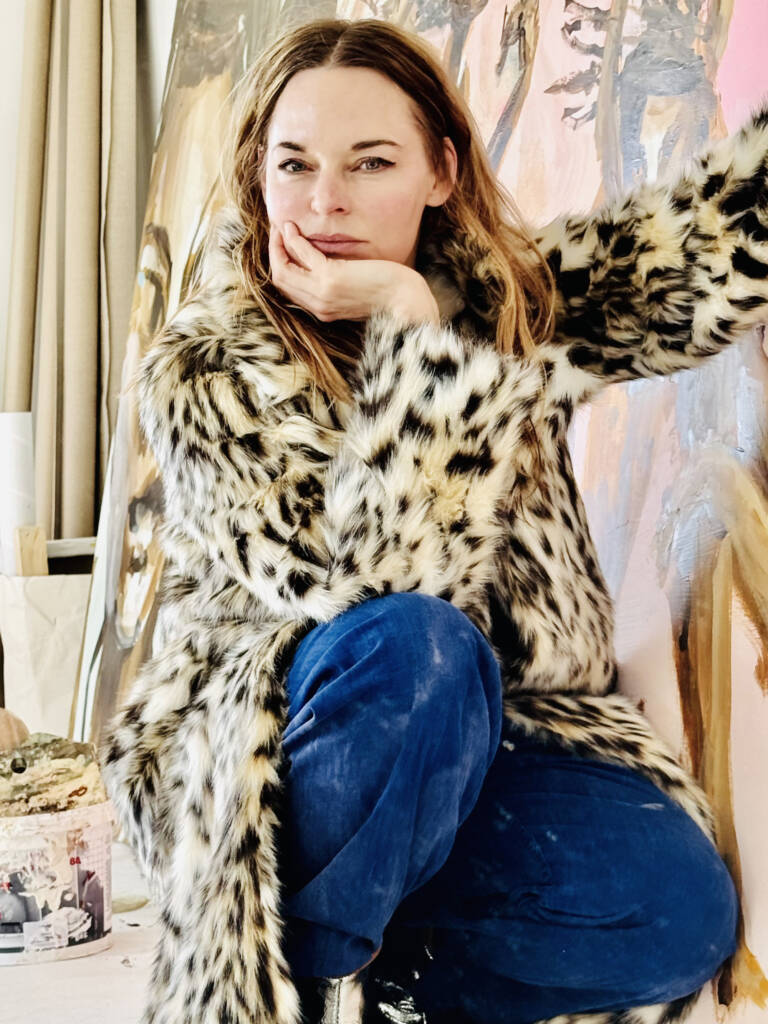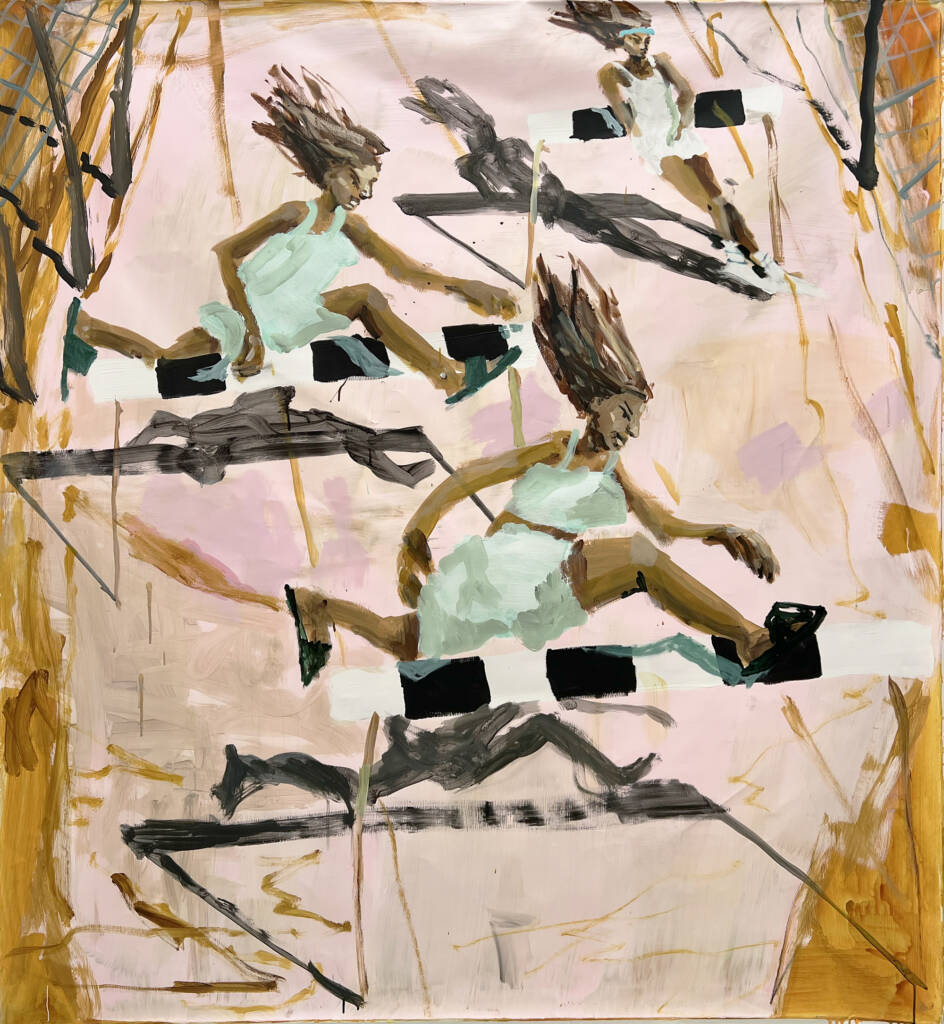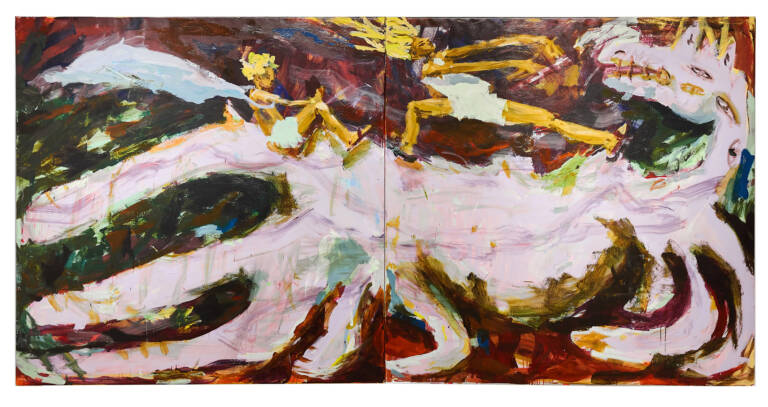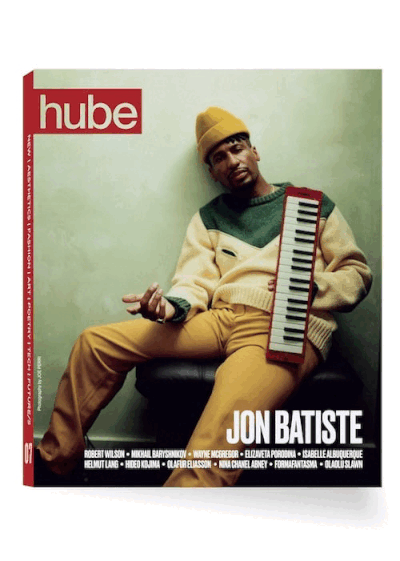

Jumping Fences, 2023

Agile Aggressions instllation view, 2025
In a conversation as kinetic and fearless as her art, Mie Olise Kjærgaard redefines what it means to be agile. Challenging the age-old prescriptions of passivity, she reveals how movement – both literal and metaphorical – becomes a form of resistance and renewal. Through dynamic structures and disruptive narratives, her work embodies the power of collaboration, defiance, and the relentless pursuit of creative freedom. Her recent collab with Chloé sees her bold vision come alive at the Paris boutique on Rue Saint-Honoré, where her raw energy meets Chloé’s cool style, offering a fresh take on modern femininity.
hube: Your exhibition, Agile Aggressions, explores the intersection of architecture, movement, and female resilience. How does the concept of ‘agility’ manifest in your work, both in the physical structures you depict and in the broader narrative of female presence in historically male-dominated spaces?
Mie Olise Kjærgaard: Agility contradicts the well-behaved, controlled passiveness traditionally urged onto women and girls throughout history. It is a way to let loose and break free in a capable way – to steer and navigate dynamically. It is both balancing and being out of control without landing in a new static situation. For me, agility is ideal because it also means that you are strong and can pull back if the mast of the ship goes horizontal. In choosing the title of the exhibition, I also felt that Agile Aggressions was somewhat a justified anger.
h: Your recent series, Disobedient Muses, draws inspiration from the 1970s French feminist artist group Les Insoumuses. How did uncovering their legacy influence your portrayal of women in this body of work, and in what ways do you see your art as a continuation of their rebellious spirit?
MOK: I believe that when the oppressed want to change their situation, teaming up is the best way. All revolutions have followed that pattern – the many oppressed team up and go against the fewer, more powerful ones. MeToo only happened because women could finally unite globally behind a hashtag, and as for women in art, acknowledging each other and the people who fought and paved the way is essential for me. Lately, this has become much more relevant than I ever imagined, and standing up is becoming life-essential again.
Les Insoumuses had great bite but also teamed up powerfully while playing on humor, wit, and bite. I love that, and I feel that they, as a group, are highly inspirational in that sense.
h: In your Hysteria series, you depict women engaging in activities historically deemed inappropriate, such as playing tennis or riding bicycles. How do these portrayals challenge traditional notions of femininity, and what reactions have you observed from audiences encountering these empowered figures?
MOK: It is strange today to think about how sports, biking, and having fun could have been the first steps toward female liberation – but they played a huge role. Biking was one of the first ways women could get around on their own without being chaperoned. Women started biking (and horseback riding) wearing trousers, and in sports, they got to laugh hard and loosen up. I think of these situations as a great way to pinpoint something quite important but in a way that can play out on the canvas as being stretched far and quite hilarious. I like when the work can point in many directions on different layers, also because it keeps the work alive and won’t strand in a single perception.
I think a lot of people see themselves in the situations happening in the work and ask me about tennis or skateboarding because many of the scenarios are, in some ways, quite normal. When mixed in new ways, they expand possibilities, and people often engage, wondering about the scenes.
h: Your solo exhibition at The Journal Gallery in New York showcased works like Old Habits and Badminton Shark, where women are depicted in dynamic, unconventional scenarios. Can you discuss the symbolism behind these scenes and how they reflect your views on contemporary womanhood?
MOK: As a painter, you can create anything, make things up, and lie – even gravity doesn’t exist. I find it funny and interesting to play with situations that could never happen in real life but are still relevant in our visual vocabulary as understandable signifiers. I think badminton and tennis are fun activities to pair with fierce animals and mothers on the run. These are all elements that I know very well and that any kid would recognise. When paired together, an absurdity occurs that I enjoy a lot and that has the power to broaden the spectrum of, for example, women’s capabilities. I want to play to expand the possible territories of what is expected and allowed.
h: The Holding Space series features young women transitioning between fantastical and mundane settings, asserting their agency beyond traditional gender roles. How do these narratives reflect your journey as a female artist navigating the art world?
MOK: I am getting to the point in my life where I finally speak from lived experience. I have found myself in many unfortunate and provocative situations, and my anger and responses are not just theoretical perspectives. Growing up on a small island, far from museums, academia, and critical perspectives, while wanting to paint and work as an artist has been challenging. As a female artist, I have had to stand up against a lot of old ideas – not only in the art world but also in real life.
In that way, the Holding Space series, which explored the female gaze and the viewpoint of female characters as subjects of their own lives rather than objects of male desire and gaze, was a way for me to reestablish the situations I lived through. Finally, in my studio, I put things straight.

